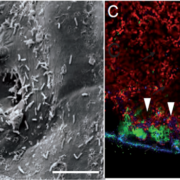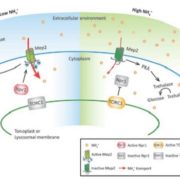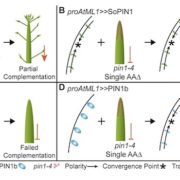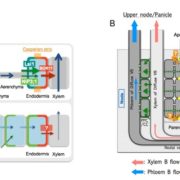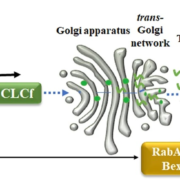How do plants export brassinosteroids?
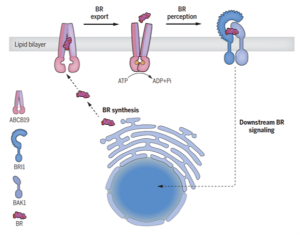 If you’ve ever wondered how plants grow, survive, and adapt to their dynamic environment, the secret lies in their vast array of chemical messengers, also called phytohormones. Brassinosteroids are important hormones that are crucial for plant development and defense against environmental stresses. Like every hormone, brassinosteroids also require specific proteins and other helpers for their perception and signaling inside the cell. Although many of the proteins involved in brassinosteroid signaling have been well-characterized, its export mechanism was unknown. In this study, Ying et al. identified ABCB19, an ABC transporter, as an exporter of this hormone. The authors demonstrated the stimulation of ATPase activity of the ABCB19 protein in presence of brassinolides (BL), which confirmed that these proteins interact with BL. Interestingly, this effect was specific to BL. The role of ABCB19 as a brassinosteroid transporter was further established by studying accumulation of BL over time in proteoliposomes containing ABCB19 and Arabidopsis protoplasts incubated with castasterone, a transport substrate for ABCB19. Additionally, in silico studies revealed that the ABCB19 consists of two transmembrane domains, one of which is important for binding with the brassinosteroid molecule. Furthermore, ABCB19 was shown to regulate brassinosteroid signaling together with ABCB1 by using plants with defective ABCB1 and ABCB19 genes. Thus, this study sheds light on an important player involved in transporting brassinosteroids across the cell membrane. (Summary by Abira Sahu @AbiraSahu) Science 10.1126/science.adj4591
If you’ve ever wondered how plants grow, survive, and adapt to their dynamic environment, the secret lies in their vast array of chemical messengers, also called phytohormones. Brassinosteroids are important hormones that are crucial for plant development and defense against environmental stresses. Like every hormone, brassinosteroids also require specific proteins and other helpers for their perception and signaling inside the cell. Although many of the proteins involved in brassinosteroid signaling have been well-characterized, its export mechanism was unknown. In this study, Ying et al. identified ABCB19, an ABC transporter, as an exporter of this hormone. The authors demonstrated the stimulation of ATPase activity of the ABCB19 protein in presence of brassinolides (BL), which confirmed that these proteins interact with BL. Interestingly, this effect was specific to BL. The role of ABCB19 as a brassinosteroid transporter was further established by studying accumulation of BL over time in proteoliposomes containing ABCB19 and Arabidopsis protoplasts incubated with castasterone, a transport substrate for ABCB19. Additionally, in silico studies revealed that the ABCB19 consists of two transmembrane domains, one of which is important for binding with the brassinosteroid molecule. Furthermore, ABCB19 was shown to regulate brassinosteroid signaling together with ABCB1 by using plants with defective ABCB1 and ABCB19 genes. Thus, this study sheds light on an important player involved in transporting brassinosteroids across the cell membrane. (Summary by Abira Sahu @AbiraSahu) Science 10.1126/science.adj4591


